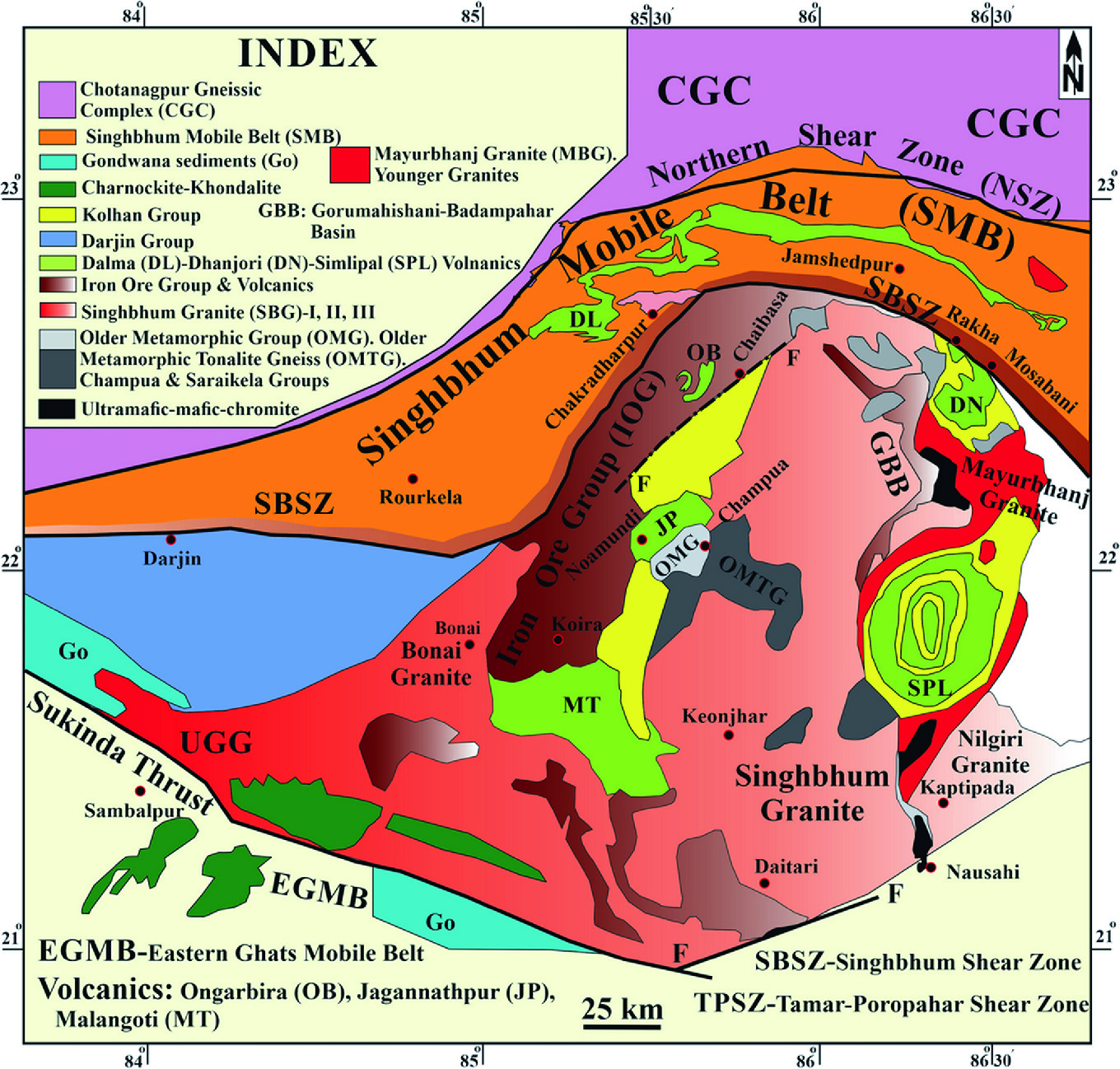The Singhbhum Impact Structure. The rock is old but I bet the dikes filling in the fractures are much younger. This looks big enough to cause the Deccan Traps and the level of erosion would fit in with an age near the end of the Cretaceous.
The Deccan Traps (lava fields) were directly emplaced by a high velocity (>100 kilometers per second) asteroid impact punching through and heating the rock to vaporization. (Not the fictional explanation of pressure release melting).
The massive ballistic and orbital debris falling into the seas do cause a massive increase in biological (single cell) production as seen in the black shales (source rock for oil). Except that the debris also shuts down photosynthesis long enough to kill all large animals other than scavengers and large reptiles (slow metabolisms).
This story is another example of the institutional denial that asteroids can directly cause Large Igneous Provinces and volcanoes.
The Deccan Traps may be one of several Large Igneous Provinces that were emplaced at the K/T boundary. There are indications of other impacts in Antarctica and in the Western United States.
The extinction at the K/T boundary was severe. The Chicxulub impact in the Yucatan was a relatively minor event that in no way caused this much damage.



